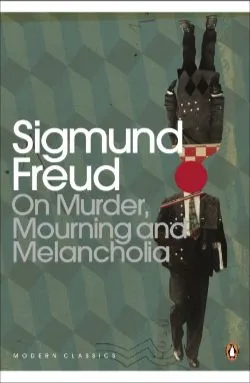
This is a collection of essays by Sigmund Freud, with the bulk of the book being made up of Totem and Taboo. “Mourning and Melancholia” is also an important work in here, while the remaining works–“Why War?” and “Transience,” for example–offer brief reflections but were not as important as the other texts.
Totem and Taboo is one of Freud’s most important texts, and he relies heavily on the then-current anthropological literature. The bulk of the text is a meandering analysis of what other scholars have said about “totems”–protective objects that represent some animal or being which must be protected by a community–and “taboos,” or social norms about behaviors that are totally forbidden for religious reasons. Freud’s contribution is his addition of neurosis to the anthropological literature: magic, for example, is a psychic phenomenon, and Freud tells us that “neurosis is characterized by the fact that neurotics elevate psychical reality above factual reality, and react just as seriously to thoughts as normal people do to realities.”
To make sense of this view, we have to remember Freud’s perspective in The Interpretation of Dreams: rather than merely dreaming when we’re asleep, we dream all the time. Our lives are not unfiltered realities; they are modified and changed by the unconscious running on the same hardware as when we are asleep. The neurotic perspective is one where the experience of reality is somehow more shaped by mental processes than those who are “normal” (which itself is a questionable characterization).
Totem and Taboo is the text where Freud speculatively pitches the idea that morality has its origins in a band of brothers killing their father: we are left with the guilt, and thus project “the father” onto the outside world. I still can’t fully grasp how Freud could build so much of his argumentation on speculation like this, but it is interesting. What it is important here, in my view, is the insight that–somehow–we project our inner compass outward, and that defines how we see the world.
There is a lot to dislike about the piece: Freud follows the early 20th century understanding of the “development” of religion as:
Primitive Religion –> Polytheistic Religion –> Monotheistic Religion –> Scientific Worldview
It’s a classically modernist metanarrative, and it doesn’t hold weight.
Even so, Totem and Taboo is required-reading for those trying to make sense of Freud’s thought.
The other important work in here is “Mourning and Melancholia,” which has in recent decades attracted more attention, thanks to Wendy Brown’s “Resisting Left Melancholy” and Enzo Traverso’s book of the same name.
Mourning is the normal response to the loss to the object of one’s desire, while melancholia is pathological because it is often unconscious. One does not even know that one had desired such a person or thing, and the loss of it is subsumed wholly in the unconscious.
When I left my Ph.D. last summer, I suffered heavily. I couldn’t figure out why, but after a few weeks I realized I was grieving. The Ph.D. was once the object of my desire–it was my driving force–and its loss through me into a state of deep depression. The same is true with leftists who have lost the possibility of a communist future–hence widespread leftist melancholia.
To overcome melancholia, it is necessary to seriously reflect on why we suffer so much. Should it remain unconscious, our suffering will continue.